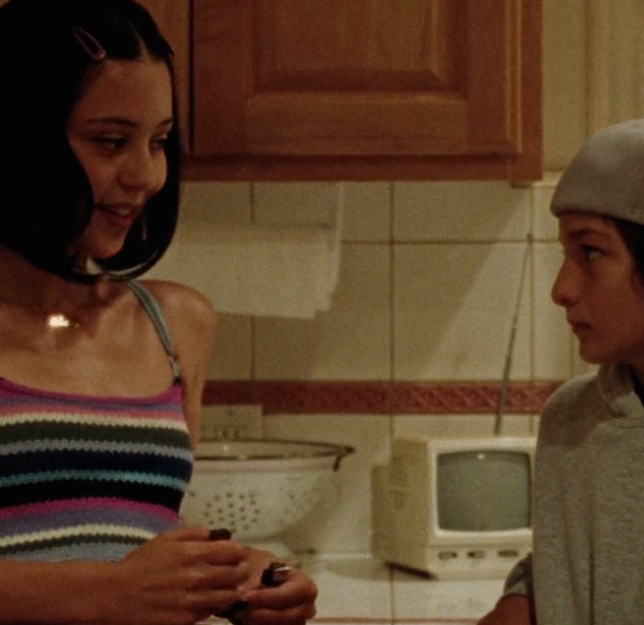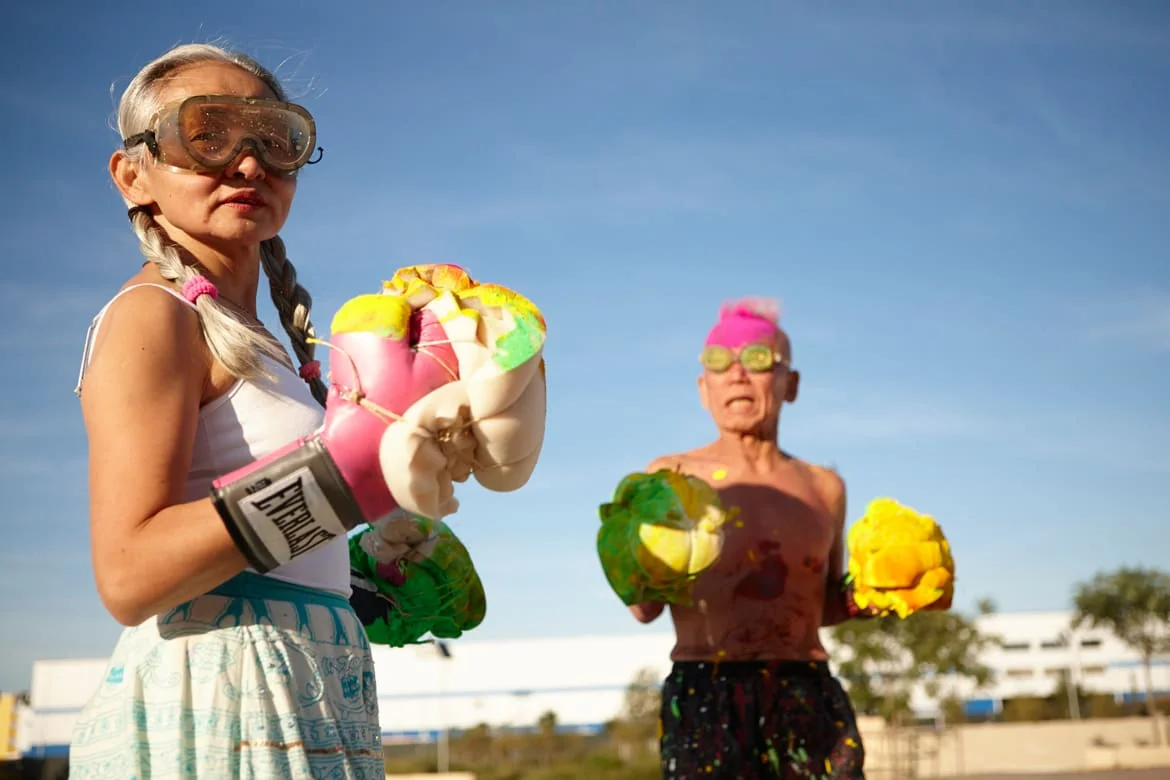‘Mid90s' Skate Culture + Boyhood in Los Angeles 1990's
by Anna Vo
★★★★★★★★☆☆
Does it pass the Bechdel test*? No.
*The Bechdel test is a simple test which names the following three criteria: (1) it has to have at least two women in it, who (2) who talk to each other, about (3) something besides a man. The test doesn’t determine how good or valuable a movie is, however, it’s a valid implication of the lack of women on screen. Being aware is the first step towards change.
Mid90s, set in 1990s Los Angeles, is a feature film debut written and directed by Jonah Hill. It stars Sunny Suljic, Lucas Hedges and Katherine Waterston, and follows a 13 year old boy who begins to hang out with an older group of skateboarders. The film’s director, Hill, has been known for his comedy roles in movies such as Superbad, The Wolf of Wall Street, 21 and 22 Jump Street.
In addition to the thematic notions explored in the movie, it was shot on 16mm film in a 4:3 aspect ratio to resemble the look and feel of raw skating footages. At first glance, the film seems to only portray skate culture, a subculture which has been commercialized especially of late due to the increasing popularity of streetwear and skate apparels. The film’s wardrobe is a reminiscence of Los Angeles 90s skatewear filled with: baggy jeans, worn and slouchy t-shirts; and brands the like of Champion, Vans, Droors Clothing and Adidas. Despite our current interest in skate culture and clothing, the film doesn’t try to play off this factor to attract our attention. In a conversation with Film School Rejects about the nostalgia portrayed in his period film, Jonah Hill replied that “The rules of the film were no skate porn and no nostalgia porn. I hate nostalgia porn. I didn’t want it to be that ’90s movie. To me, the idea was if at the last second, if you took it out of the 90s, it just would work anyway. Nothing was overt.” The film’s costume designer is Heidi Bivens, who met Hill at a show in Los Angeles 3 years before the film went into production. After talking about Mid90s, Bivens was invited to be apart of it (her previous film projects include Harmony Korine’s Spring Breakers). Her vision for the movie’s wardrobe aligns with Hill’s. "The whole idea was that everything would be subtle," she explained to Fashionista. "All of the wardrobe cues...would be subtle in a way that wouldn't call your attention to it."
If we’ve only looked at Mid90s as an ode to skate culture or as a coming-of-age movie, I think we might’ve missed the other messages.
Characterization is possibly one of the most successful achievements the actor-turned-director accomplished in his film debut. The entire movie, from beginning to end, also delves into the issue of problematic toxic masculinity within teenage boys growing up. The peer pressure to be cool by doing reckless things, enacting violence to feel strength and treating everybody (especially the authorities) with no respect to signify their power. Hill made us sympathize with the boys and their stories at certain moments, but he also didn’t shy away from portraying the boys in more crude nature. The idea that ‘boys will be boys’ is perhaps challenged in this film. If watching a 13 year old uses profanity, engages in underage drinking and sex isn’t something you can surpass, then maybe this will not be a movie for you. However, if you can get past that, the stories which unfold in this movie will be poignant, complex and extremely timely to this generation. “I love all the characters I create from the bottom of my heart,” said Jonah Hill about the characters in Mid90s in an interview with Slashfilm, “To me, I hope to always get to create complex, interesting characters.”
Underage subject matters
In addition to shocking moments such as Stevie’s bully scenes or high tension points such as Stevie’s car argument with his mother, Hill took the risk of portraying underage drinking and sex in exploring boyhood. “Underage” in this scenario doesn’t imply only a few years underage, but we’re talking about a 13 year old boy being peer and self-pressured to undergo situations that he isn’t prompted for. For a split second, I realized that situations like these do happen - and they happen everyday. Perhaps for brief moment, this thought will make you feel uncomfortable on your seat in the theatre. But quickly, you remember that this boy lacks a father figure and is growing up, desperately trying to figure himself out. His skate friends, despite their recklessness, is a symbol for family, protection and a sense of belonging.
ph: Tobin Yelland
Skate culture
Hill explores skate culture with sincerity and rawness in this movie. He doesn’t glamourize the culture by creating characters that are “cool kids” who skate because they have nothing better to do with their lives. Not only that the cast of actors is comprised of actual skaters, the sport - skateboarding - eventually begins to represent larger thematic ideas of family, dreams and identity. One line which stuck with me throughout the film was something said by Fuckshit, played by Olan Prenatt: “That’s why we ride a piece of wood like what that does to somebody’s spirit.” The boys in the film are often taken lightly by other adults and authoritative figures because they’re viewed as unambitious and thoughtless kids. This stereotypical perception of skate culture is debunked by Hill’s perplexed portrayal of the boys’ personal relations, hopes and dreams. Like when Ray (Na-kel Smith) displays his soft side by comforting Stevie, when Fourth Grade (Ryder McLaughlin) proves to be a promising filmmaker or when Fuckshit (Olan Prenatt) explains how much skating means to him.
Mid90s, like many other A24 produced films, isn’t supposed to be an easy watch. The film explores hard-hitting themes such as violence and underage substance uses, moreover, it also exposes upsetting subject matters such as a near rape scene when Estee took Stevie inside a bedroom where she engaged him in sexual activities even when he seemed clearly uncomfortable. The film isn’t Hill’s autobiography but it still feels personal. Mid90s depicts well the theme of boyhood and the idea of growing up wanting to find something (person or idea) to aspire towards. As the journey unfolds, other domestic and societal issues interlink to further complicate the coming of age process. In this movie, we’re seeing just that, the flawed character of Stevie who is trying to grow up as he’s exploring a subculture, in search for a safe haven which he lacks at home.











